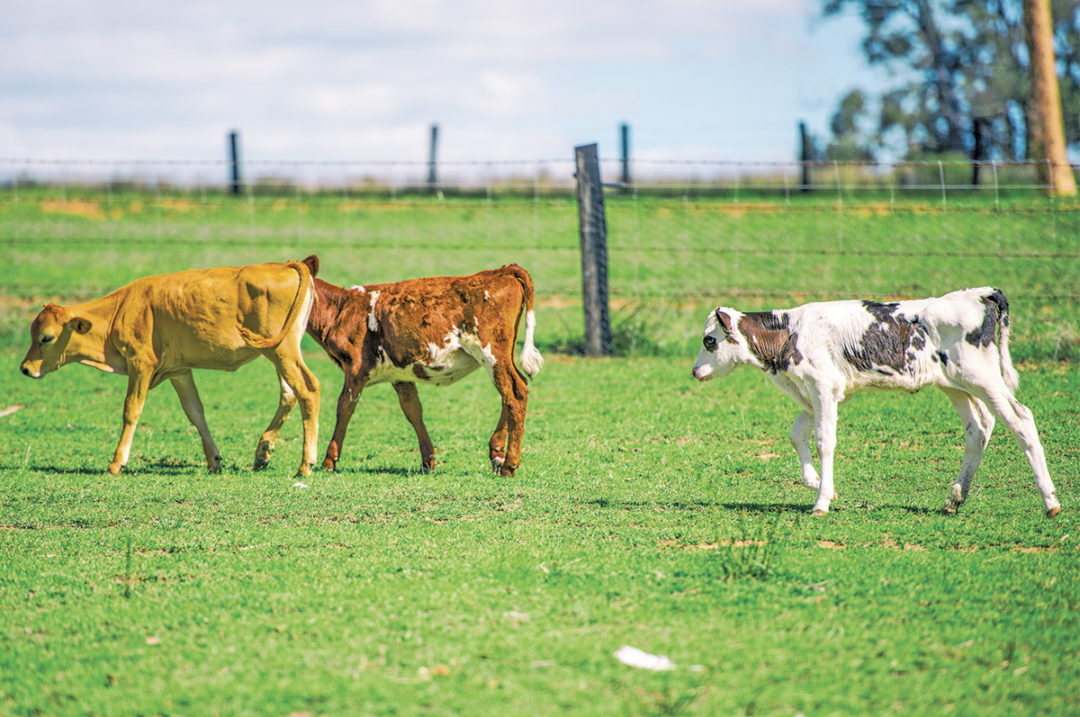Dairy farmers have traditionally grappled with the challenge of dealing with surplus male dairy calves, often sold at low prices. Research has revealed a significant increase in the use of beef sires with dairy cows, particularly between 2015 and 2019. Notably, the application of beef semen has risen, especially with increasing parity and service numbers, while the use of sexed semen has declined with rising parity and service numbers. This suggests that sexed semen is more aggressively applied in younger, genetically superior and highly fertile cows, leading to a substantial reduction in unwanted male calves.
The combination of sexed semen and terminal beef crossbreeding has proven highly profitable, resulting in crossbred offspring with excellent carcass and meat qualities – appealing to consumers. Crossbreeding to beef sires is a powerful management tool at the dairy farmer's disposal using superior sexed dairy semen for heifers and beef semen for cows. This combination can significantly impact a herd's genetics and overall net return.
A study recently conducted in Europe suggested that the net returns were $19 per cow when sexed semen was used on genetically superior heifers and beef semen on genetically inferior, multiparous cows. This increase was observed in herds with high management standards for reproductive performance, longevity and calf survival.
Choosing the right beef breed
The Angus breed stands as the most prevalent choice in the U.S. with 55.1% and 39.1% for Holstein and Jersey crosses, respectively. The breed excels in terms of calving ease, making it an ideal choice for dairy producers seeking trouble-free freshening, particularly in smaller dairy breeds or primiparous cows. However, this same lower birthweight may affect the price of day-old beef-on-dairy calves. Crossbreds demonstrate strong performance concerning yearling growth with high marbling, resulting in top-quality beef.
Limousin takes the second spot, gaining popularity among both Jersey and Holstein breeders, with respective usage rates of 13.9% and 23.5%. This cross brings several advantages, including a favorable ribeye area, which surpasses that of the Angus. This trait helps address the smaller size and elongated ribeye shape often seen in dairy cattle, enhancing the overall uniformity of crossbred carcasses. Limousin also showcases strong growth and feed efficiency, appealing to calf buyers. However, it does come with concerns related to calving ease compared to Angus.
In third place, we have the Simmental breed, used in 11.7% and 20.5% of Holstein and Jersey breeds, respectively. Simmentals offer a positive ribeye area, effectively addressing a weakness found in purebred dairy cattle. Simmentals are well suited for crossbreeding with Holsteins, provide an appropriate carcass weight and promote efficient growth. Like Limousin, it does come with calving ease concerns, siring higher birthweights and more calving difficulties compared to Angus.Gain is the name of the game
Crossbreeding dairy cattle with beef breeds is a game-changer, particularly in terms of average daily gain (ADG). Pasture-based and feedlot scenarios show that crossbred cattle with Continental sires often outperform pure dairy steers. A 2021 U.S. study assessed weaning and yearling weights in animals with dairy and Simmental genetics. Each percentage increase in Simmental genetic influence translated to a 0.29 kilogram (0.64 pound) higher weaning weight and a 0.44 kilogram (0.97 pound) higher yearling weight. While daily gain wasn't directly measured, this study strongly suggests that breed composition significantly influences animal growth to weaning and yearling weights.
Recent research funded by the American Jersey Cattle Association highlighted that Angus genetics could enhance profitability in beef-by-Jersey systems. Angus-sired steers from Jersey dams gained 0.12 to 0.23 kilogram (0.26 to 0.51 pound) more daily than purebred Jersey steers. These differences in gain can be attributed, in part, to the fact that Jersey steers consumed between 0.13 kilogram (0.29 pound) and 1.05 kilograms (2.31 pounds) less dry matter daily than their crossbred counterparts, requiring 15 additional days on feed. Angus-sired steers demonstrated superior feed efficiency, partly due to their reduced feed intake. Similarly, Angus-sired heifers and steers gained 0.12 kilogram (0.26 pound) more daily than Jersey heifers and steers on average. Angus-sired calves consumed 14% more dry matter daily and spent 34 fewer days on feed than Jersey-sired calves. Despite variations in intake, feed conversion rates didn't ultimately differ between sire breeds.
The beef industry in the U.S. has witnessed British breeds being selected for heavier bodyweights over the past few decades, with Angus now surpassing Continental breeds in the direct breed effect for mature bodyweight. These trends may impact comparisons between historical and more recent beef-on-dairy data.
We cannot manage what we cannot measure
Genetics alone are not enough. To fully harness the potential of beef-on-dairy crosses, accurate measurement of gain and body condition score (BCS) changes is vital.
This emphasis on bodyweight and condition scores is inextricably linked to nutrition and precise weight monitoring, serving as crucial indicators of genetic progress in a herd.
Bodyweight, a product of genetics and nutrition, reflects growth and development potential, highlighting genetics' role in nutrient conversion into muscle, bone and overall yield.
Similarly, BCS reflects genetic factors affecting a cow's reproductive health and efficiency, underscoring the importance of selecting for genetics related to body condition and emphasizing nutrition's role in realizing these genetic potentials.
The introduction of 3D cameras takes genetic assessment to the next level, offering precise, non-invasive measurements of cattle's physical attributes. These advanced tools provide valuable insights into body conformation, closely linked to genetic factors. Cameras enhance the accuracy of selection processes and empower breeders to refine their breeding programs, make informed decisions and accelerate progress toward superior genetic outcomes.
This interplay of genetics, nutrition, monitoring and innovative technology unlocks the full potential of dairy herds, improving immediate performance and long-term genetic advancement, ultimately leading to a more sustainable and profitable future.







